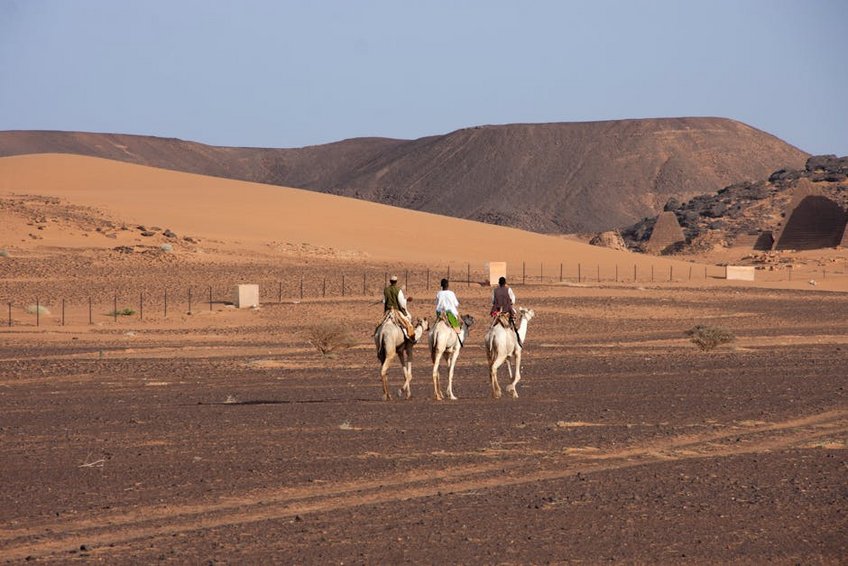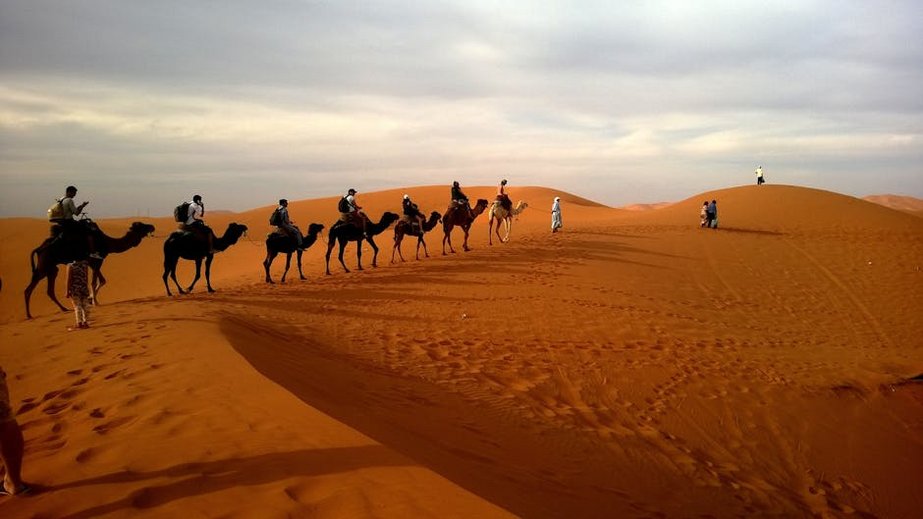Traditional Caravan Routes: Tracing Ancient Trade Paths for Modern Travelers
Imagine walking in the footsteps of ancient merchants, traders, and explorers who shaped civilizations through their journeys along traditional caravan routes. These historic pathways represent more than just trade corridors—they’re living museums of human connection, cultural exchange, and adventure that continue to captivate modern travelers. Traditional caravan routes offer unparalleled opportunities to experience diverse landscapes, encounter ancient cultures, and understand how commerce and communication built the world we know today. Whether you’re drawn to the legendary Silk Road, the spice routes of Arabia, or the salt roads of Africa, these journeys provide profound connections to our shared human heritage. The magic of traditional caravan routes lies in their ability to transport you through time while offering some of the most spectacular scenery and cultural experiences available to contemporary explorers.
Traditional Caravan Routes Essential Information – Historical Context and Significance
Traditional caravan routes served as the internet of the ancient world, connecting civilizations, facilitating cultural exchange, and enabling the flow of goods, ideas, and innovations across continents. These networks developed over centuries, with merchants establishing resting points, water sources, and trading posts that eventually grew into cities and cultural centers. The most famous traditional caravan routes include the Silk Road connecting China to the Mediterranean, the Trans-Saharan routes linking North Africa to sub-Saharan kingdoms, the Incense Route through the Arabian Peninsula, and the Amber Road across Europe. Each route developed unique characteristics based on the goods traded, the landscapes traversed, and the cultures connected. Understanding this historical context enriches your journey immensely, as you’ll appreciate how these pathways shaped economics, religion, technology, and even culinary traditions across vast regions.
Major Historical Trade Networks – What You Need to Know
- The Silk Road network actually comprised multiple routes covering over 4,000 miles, facilitating not just silk trade but also paper, gunpowder, spices, and religious ideas between East and West
- Trans-Saharan caravan routes enabled the salt-gold trade between Mediterranean civilizations and West African empires like Ghana and Mali, using camel caravans that could include thousands of animals
- The Incense Route transported frankincense and myrrh from southern Arabia to Mediterranean markets, creating wealth that built magnificent cities like Petra and Palmyra
- European amber routes connected Baltic Sea amber sources to Mediterranean civilizations, with evidence of this trade dating back to Bronze Age civilizations
- Budget travelers can experience traditional caravan routes for $50-75 USD daily by using public transportation, staying in guesthouses, and eating at local establishments—focus on countries with lower costs like Uzbekistan or Morocco
- Mid-range travelers should budget $150-250 USD daily for comfortable hotels, guided day tours, better transportation options, and meals at quality restaurants—this range works well for most Central Asian and Middle Eastern destinations
- Luxury experiences including private guides, boutique hotels, and special access to historical sites can cost $400-800+ USD daily, particularly for customized itineraries or remote route segments requiring special arrangements
- UNESCO Silk Roads Programme
- Encyclopedia Britannica Trade Route Historical Information
Cultural Exchange Impact – Key Details
Beyond commercial goods, traditional caravan routes became conduits for cultural and technological exchange that transformed societies along their paths. Buddhism traveled from India to China via Silk Road merchants, while Islamic scholarship spread along Trans-Saharan routes. Mathematical concepts, astronomical knowledge, and artistic techniques flowed in both directions, creating hybrid cultures in trading cities from Samarkand to Timbuktu. The culinary impact remains visible today—pasta likely traveled from China to Italy, while spices from Asia transformed European cuisine. These routes also facilitated the spread of languages, with trading pidgins developing into full languages like Swahili along East African trade routes. Understanding this cultural dimension transforms your journey from simple tourism to a meaningful exploration of how human connections shaped our modern world.

Traditional Caravan Routes Planning Your Trip – Modern Exploration Strategies
Planning a journey along traditional caravan routes requires balancing historical authenticity with modern comfort and safety considerations. Unlike ancient merchants who might spend months or years on these routes, contemporary travelers can experience highlights through well-planned itineraries that capture the essence of these historical pathways. The best approach involves selecting specific segments that match your interests, time constraints, and travel style. Whether you prefer guided tours with expert historians, independent overland travel, or luxury experiences that recreate the romance of caravan travel with modern amenities, there are options for every type of traveler. Research is crucial—understanding visa requirements, seasonal weather patterns, and cultural sensitivities will ensure your journey is both enriching and smooth. Remember that many traditional caravan routes pass through remote areas, so thorough preparation is essential for a successful adventure.
Best Time to Visit Traditional Caravan Routes
Timing your traditional caravan routes exploration depends significantly on which route segments you choose and your tolerance for extreme weather. For Silk Road routes through Central Asia, spring (April-June) and autumn (September-October) offer mild temperatures and manageable tourist crowds. Trans-Saharan routes are best visited from November to February when desert temperatures are cooler, though nights can be surprisingly cold. Arabian Peninsula routes are most comfortable between October and April, avoiding the intense summer heat. European amber route explorations are ideal from May to September when museums and historical sites have longer opening hours and weather permits comfortable outdoor exploration. Always check regional climate patterns and cultural calendars—Ramadan or local festivals might affect availability and experiences.
Budget Planning and Costs for Caravan Route Travel
Essential Preparation Checklist
Proper preparation ensures your traditional caravan routes journey is safe, comfortable, and culturally respectful. Begin with comprehensive travel insurance that covers medical evacuation, particularly important for remote route segments. Obtain necessary visas well in advance—many countries along these routes require applications submitted months ahead. Pack appropriate clothing considering both cultural norms and climate variations; modest dress is essential in many Muslim-majority countries along these routes. Learn basic phrases in local languages—even simple greetings in Arabic, Mandarin, or Russian enhance interactions. Download offline maps and translation apps since connectivity may be limited in remote areas. Finally, consult travel advisories and register with your embassy if traveling through regions with potential security concerns.
Traditional Caravan Routes Top Attractions and Activities – Must-Experience Highlights
Journeying along traditional caravan routes offers incredible diversity in attractions, from ancient archaeological sites and bustling markets to breathtaking natural landscapes that haven’t changed significantly since caravan days. The Silk Road alone presents world-class experiences like walking through Samarkand’s Registan Square, exploring the Mogao Caves near Dunhuang, or marveling at Turkmenistan’s Darvaza Gas Crater. Trans-Saharan routes feature the medieval trading centers of Timbuktu and Djenné, the stunning architecture of Moroccan ksars, and the dramatic desert landscapes of the Sahara. Arabian Peninsula routes include Petra’s rose-red city, the frankincense trees of Oman, and the ancient irrigation systems of Yemen. European amber routes offer Hanseatic League cities, Baltic coastal beauty, and magnificent museums housing amber artifacts. Beyond these famous sites, the real magic often lies in unexpected encounters—sharing tea with nomadic families, discovering little-known archaeological sites, or simply watching desert sunsets that haven’t changed for millennia.
Must-See Historical Sites and Cultural Centers
Certain locations along traditional caravan routes stand out for their historical significance and preservation. Samarkand’s architectural marvels represent the pinnacle of Timurid civilization and Silk Road wealth. Morocco’s Ait Benhaddou exemplifies the fortified trading posts that dotted Saharan routes. Jordan’s Petra demonstrates Nabatean engineering genius in controlling incense trade routes. Ethiopia’s rock-hewn churches reflect how Christian traditions traveled along trade networks. China’s Jiayuguan Fortress marks the western end of the Great Wall and a key Silk Road checkpoint. Turkey’s Grand Bazaar in Istanbul continues centuries of trade tradition in a magnificent historical setting. These sites provide tangible connections to the merchants, missionaries, and explorers who traveled these routes centuries ago, and many offer excellent museums and expert guides to deepen your understanding.
Hidden Gems and Local Experiences
Beyond the famous sites, traditional caravan routes offer countless lesser-known experiences that provide deeper cultural immersion. In Uzbekistan, visit the pottery workshops of Rishton where techniques haven’t changed for centuries. In Morocco, stay with Berber families in remote desert villages to understand nomadic traditions. In Oman, help harvest frankincense and learn its cultural significance from local families. In China, explore the abandoned city of Jiaobe near Turpan, remarkably preserved in the desert climate. In Mali, visit Djenne’s Monday market where traders still arrive by donkey and canoe, maintaining centuries-old patterns. These authentic experiences often become trip highlights, offering personal connections to living traditions that continue along these ancient trade routes. Local guides can help arrange these encounters while ensuring cultural sensitivity and fair compensation for communities.
Traditional Caravan Routes Practical Travel Information – Transportation and Accommodation
Modern travel along traditional caravan routes offers various transportation options that balance authenticity with comfort. While few will undertake months-long camel caravan journeys, you can experience segments through combination of flights, trains, private vehicles, and sometimes animal transport. Central Asian Silk Road routes are well-served by trains between major cities, with comfortable sleeper options. Moroccan and Trans-Saharan routes often require 4×4 vehicles for desert segments. Chinese Silk Road sections have excellent high-speed rail connections. Accommodation ranges from basic homestays in remote villages to luxurious desert camps that recreate caravan stopping points with modern comfort. Advance booking is essential for quality accommodations in popular areas, while remote regions may require flexibility and patience. Understanding these practical aspects ensures your journey captures the romance of caravan travel without unnecessary hardship.
| Transportation Type | Route Applications | Approximate Cost (USD) |
|---|---|---|
| Domestic Flights | Connecting major hubs across long distances | $50-200 per segment |
| Train Travel | Central Asia and China Silk Road routes | $20-100 depending on class |
| Private Driver/4×4 | Desert routes, remote areas, flexibility | $100-300 daily including driver |
| Local Guides with Camels | Short desert experiences, cultural immersion | $50-150 per day including animals |


